Strategic Partnerships
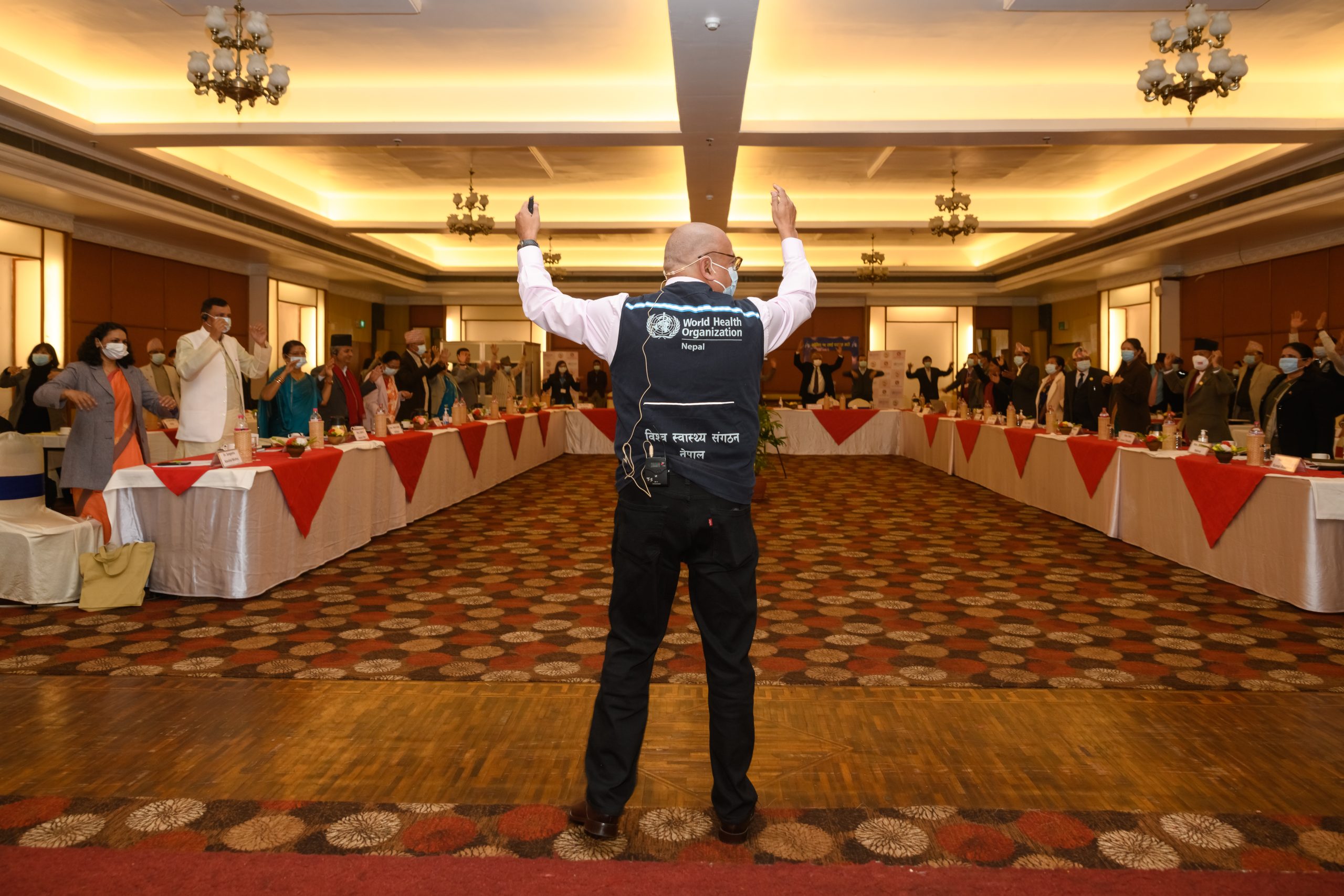
Leading a training session in Crisis Communication for Speakers and Deputy Speakers of the seven provincial parliaments of Nepal during COVID-19
In today’s complex and connected world, partnerships have become critical for organisations seeking to maximise their effect and reach. No single organisation has all of the resources or skills required to tackle the diverse and complex challenges we confront. As a result, partnerships have evolved into important tools for enriching solutions, exchanging expertise, and increasing the reach and effectiveness of programmes and initiatives. With over two decades of expertise, I specialise in developing strategic alliances that create outstanding results for governments, foundations, UN organisations, think tanks, and non-governmental organisations (NGOs). By establishing and implementing high-impact relationships, I have assisted organisations in bringing well-being to countless people and communities worldwide.
Notable Highlights
– Established strategic partnerships on behalf of WHO in Nepal with:
- National Assembly of Nepal
- All seven provincial Assemblies of Nepal
- Federation of Nepali Journalists
– Mapped, negotiated, and implemented a three-tiered partnership strategy for the sustainability of the Geneva Health Forum. This strategy includes establishing Public-Private partnership arrangements focused on content, thematic, and geographic partnerships, ensuring credibility while delivering impactful results.
– Developed private sector partnerships for UNICEF Malaysia with Standard Chartered Bank, Rotary Club, and Sonny San and launched the UNICEF CSR award for Malaysia, driving significant support and engagement from the private sector.
– Supported the implementation of the Ohrid Peace Agreement by establishing strategic partnerships, including:
– Inter-ethnic coalition of 75 NGOs in fYROM
– Network of six NGO resource centres across the country
– Network of policy advisors to political parties
– Roma Experts’ Network
– Mapped partnership possibilities, identified entry points, and built strategic partnerships with key stakeholders, including:
– Ministry of Health, Attorney-Generals’ Office, and the Institute of Health Management in Malaysia for UNICEF
– Office of the President of fYROM, South East European University, and KAS for ECMI, Germany
– Muslim political, faith, and civil society actors in Sri Lanka for Cambridge University
– Brookings Institute for the Centre for Refugees and Forced Migration Studies in Skopje
– Ministry of Health of Malaysia and the Ministry of Health, Hong Kong, on Harm Reduction and National AIDS Strategy implementation.
Click below to explore my portfolio of strategic partnerships and learn more about the impactful projects I have been involved in.
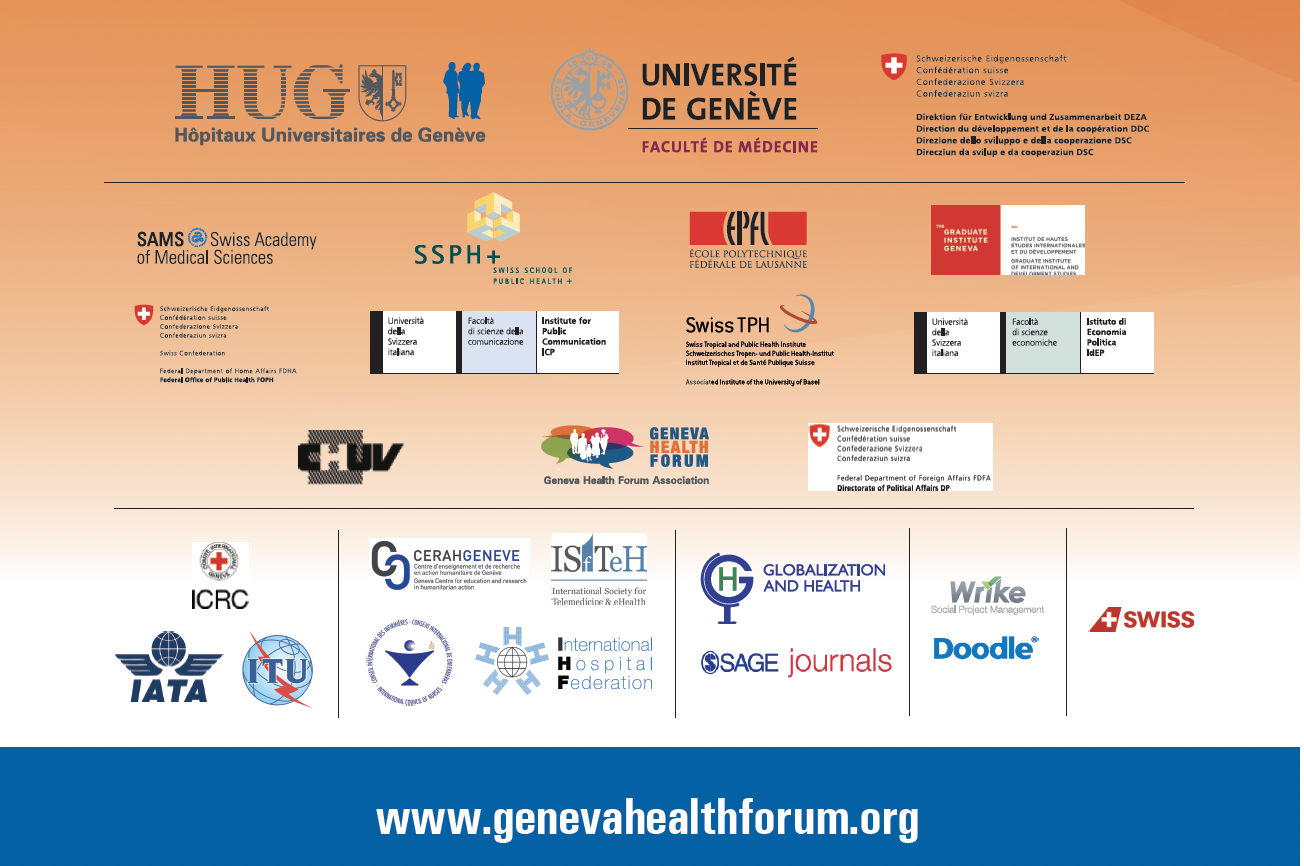
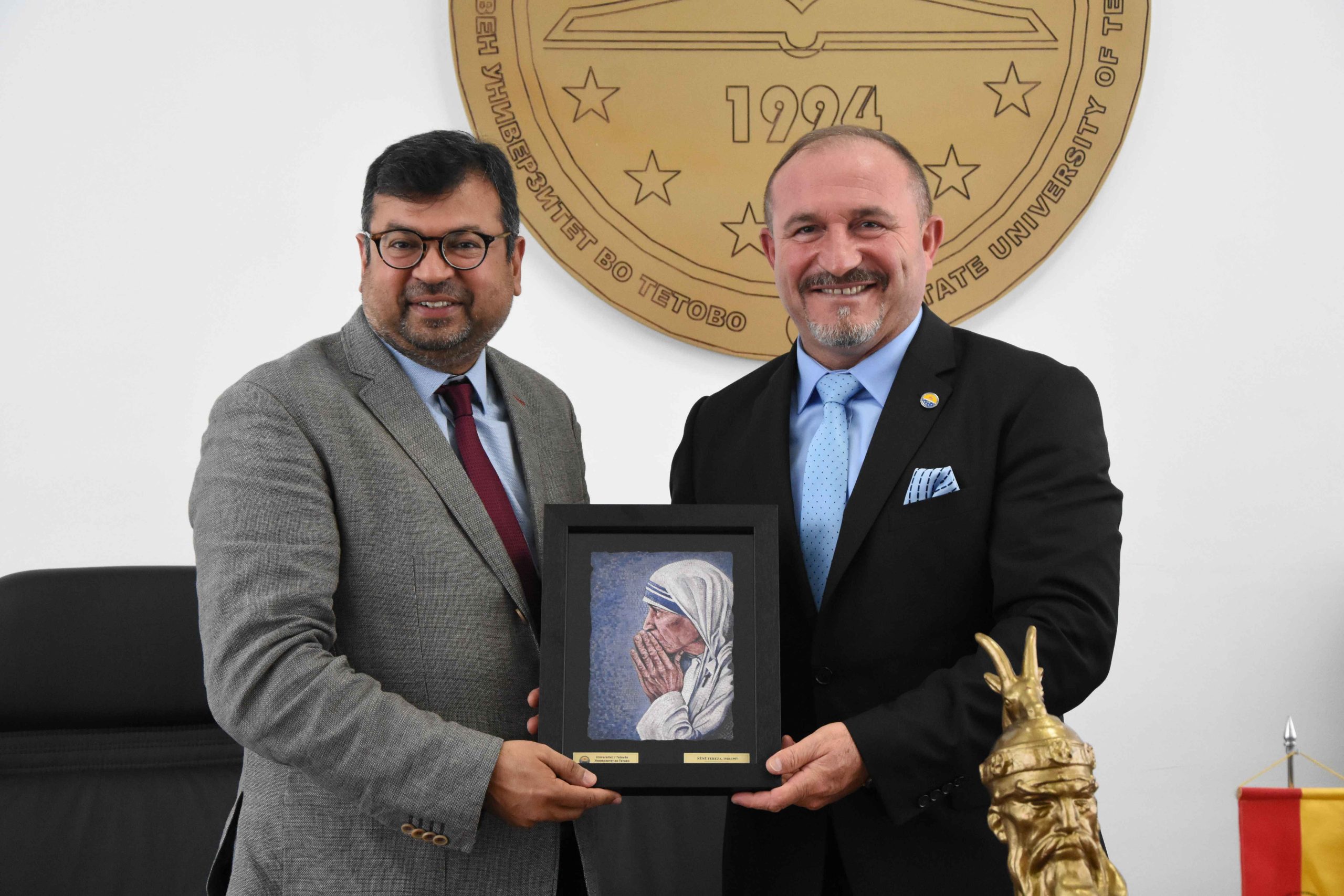
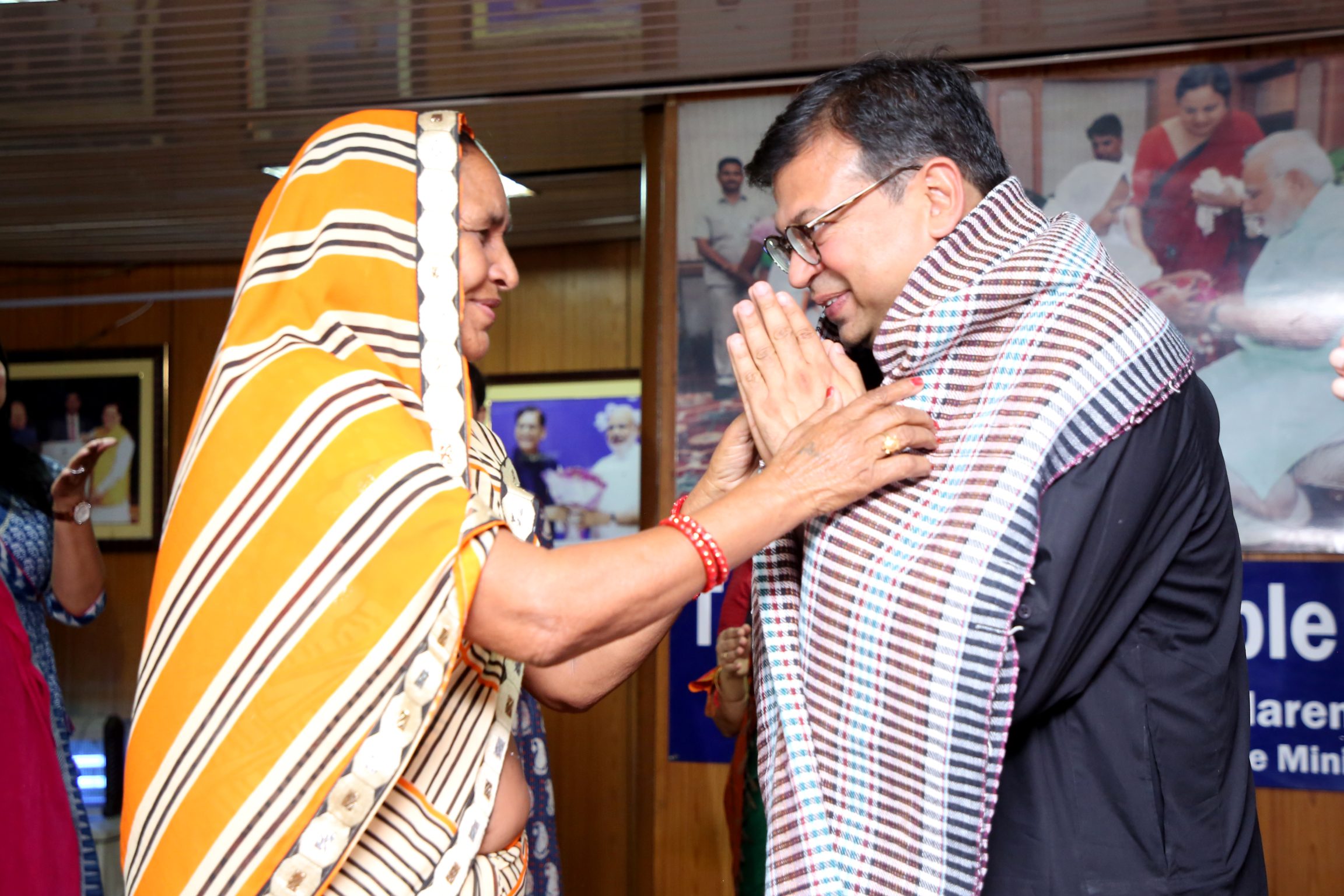
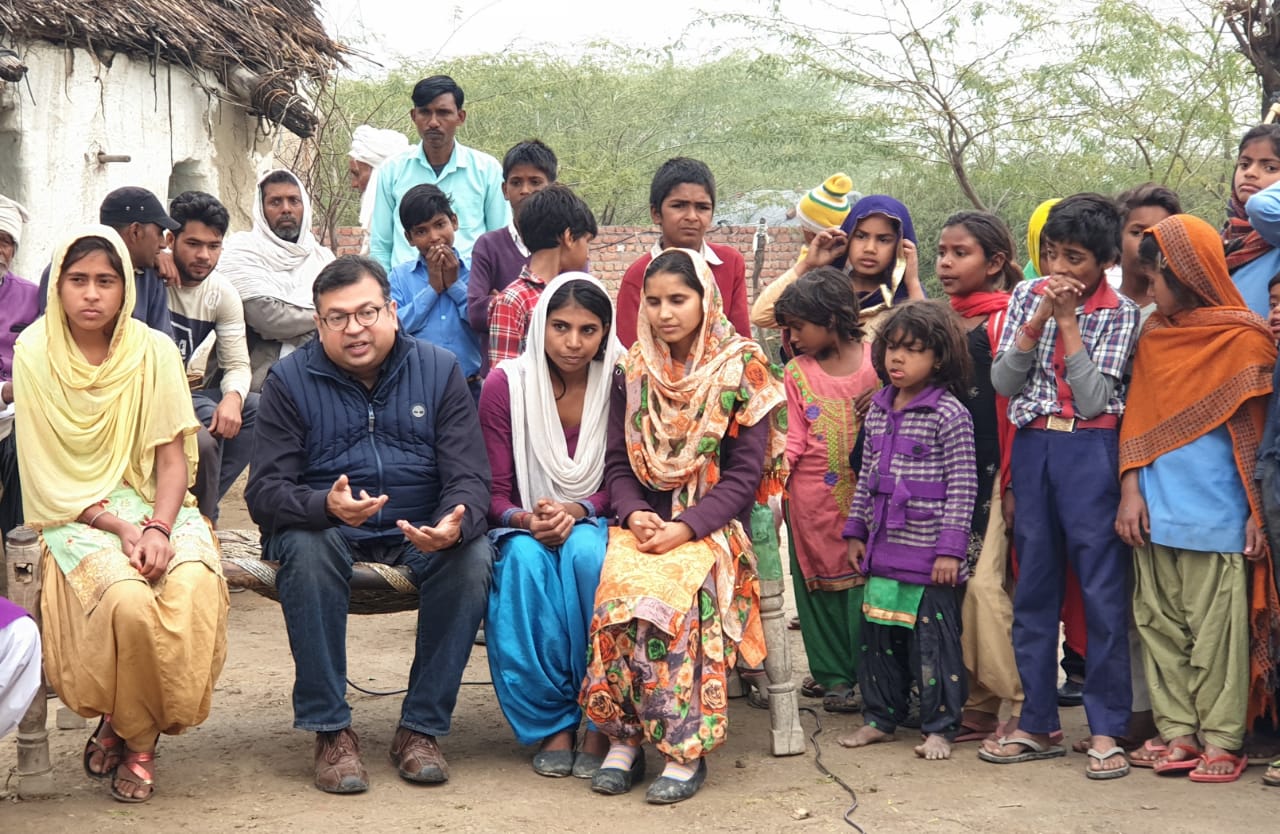
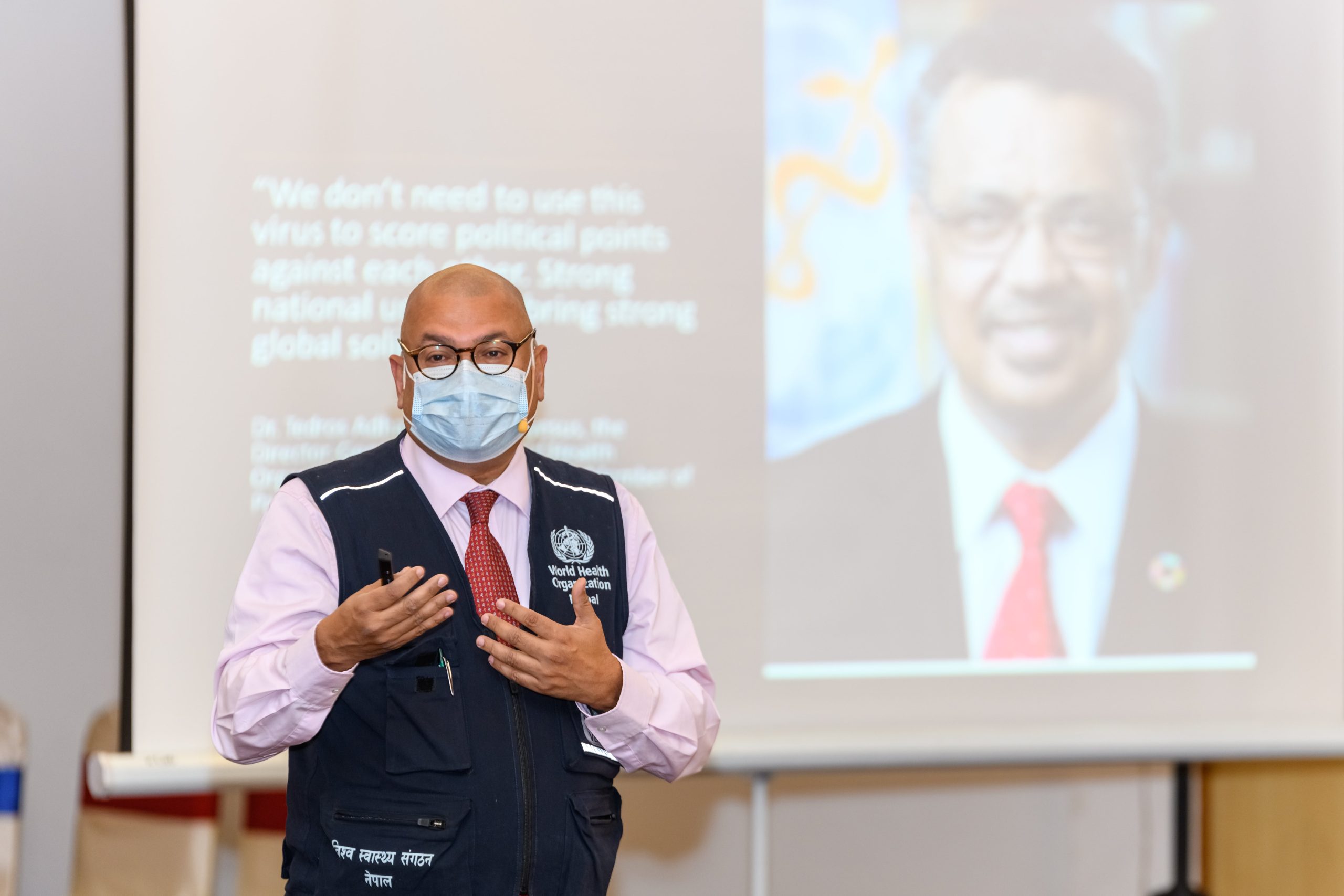

What ?
sector
Where ?
When ?
With whom ?
Placing a new Think Tank on the global map
Sector?
Refugees, Internally displaced, Humanitarian emergencies
What?
Strategic Communication, Strategic Partnerships
Where?
Macedonia
Why?
The Centre for Refugee and Forced Migration Studies was a newly established think tank. The challenge was how to establish linkages and partnerships with the well-established think tanks around the world on refugee and migration issues.
When?
2000, 2001
What exactly?
In 2000 UNHCR and the University Ss. Cyril and Methodius, Skopje jointly set up the Centre for Refugee and Forced Migration Studies (CRFMS).
UNHCR commissioned me to develop the strategy for this Think Tank including a Communications Strategy.
Following the strategy a website, newsletter, brochures and flyers were developed for the Centre. Targeted dissemination of the outreach material resulted in high visibility of the Centre and its output.
We established a strategic partnership with the Brookings Institute and an international conference in Skopje on IDPs was organized.
With- whom?
United Nations High Commissioner for Refugees (UNHCR)
University of Skopje Ss. Cyril and Methodius
Institute for Sociological Juridical and Political Research
Helsinki Committee of Macedonia
Centre for Human Rights, Macedonia
What happened?
Strategic partnerships were established with leading think tanks including the Brookings Institute and the European Centre for Minority Issues and an international conference in Skopje on IDPs was established.
“ Sunoor Verma has pioneered important and innovative methodologies in relation to roject planning and delivery, has the capacity to ensure rapid and reliable project implementation ccording to agreed targets and possesses an amazing degree of strategic oversight and insight. ”
Marc Weller
Director
European Centre for Minority Issues, Germany
Bringing together political adversaries on policy
Sector?
Minority issues; Inter-ethnic relations
What?
Dialogue Management; Strategic partnerships; Capacity building;
Where?
Republic of Macedonia
Why?
The Ohrid Peace Agreement signed between the Republic of Macedonia and the Albanian armed groups in 2001 was meant to end the armed conflict in Macedonia. The peace negotiators felt that if the communities would not see rapid implementation of the agreement, it would have no meaning and violence would stage a comeback in the country.
When?
2004, 2005
What exactly?
I performed the needs assessment was to examine what intervention would lead to rapid results and de-escalation of ethnic tensions.This led to the design of a dialogue project in the Republic of Macedonia that provided politically influential persons with the opportunity to work together to create more sustainable and inclusive policies. A highly committed team led by Michael Szporluk implemented the project. I supervised the implementation and ensured support from all political parties and donors.
With- whom?
European Centre for Minority Issues, Germany
Ministry of External Affairs, Ireland
What happened?
Policy recommendations generated by the multi-ethnic, multi party working groups were channeled to policy and decision makers. This led to emergence of new policies, which contributed to making the peace agreement work for the citizens of the Republic of Macedonia.
The dialogue process led to the formation of expertise based working groups, which demonstrated to all involved parties that concerns of all ethnic groups are very similar and need to be tackled with professionalism and seriousness.
Experts of the “minor minorities” were engaged in mainstream policy and advocacy work, which opened new channels for their respective communities to express their concerns.
“ Sunoor Verma makes ideals work in practice by focusing on issues that successfully bring together parties, which in another context might be on opposite sides of a conflict. In so doing, he brings about action, which brings concrete benefits to all while making the potential lines of conflict gradually less relevant. ”
Dr. Eben Friedman
Regional Representative
European Centre for Minority Issues
Setting up a Think Tank on refugees and forced migration studies
Sector?
Refugees; Internally displaced; Humanitarian emergencies
What?
Institution building; Confidence building; Fundraising; Think Tank set-up; Strategic planning; Strategic partnerships; Strategic communications
Where?
Macedonia
Why?
Within the first ten years of its existence, two major refugee influxes impacted the Republic of Macedonia. Support of the international community helped the country cope gracefully with these humanitarian emergencies. Acknowledging the inherent volatility of the region, it was vital that the know- how generated in the country in dealing with displaced populations is institutionalized and capacity be built systematically for emergency preparedness.
When?
2000, 2001
What exactly?
I conducted a needs assessment and a mapping of potential partners. I then developed the project proposal and fundraised with donors to set up the Center for Refugees and Forced Migration Studies (CRFMS) at the Ss. Cyril and Methodius University in Skopje. The aim of the Center is to become a leading regional resource center in its field; to foster a regional network of similar research centers and to promote standards of excellence in research on Refugee and Forced Migration related subjects. Set up with seed funding from UNHCR, I led vigorous fundraising andexpandedthe portfolio of donors. Ialso set up and mentored the project management team of the centre. The project was implemented from February 2000 to September 2001.
With- whom?
United Nations High Commissioner for Refugees UNHCR
Skopje University Ss. Cyril & Methodius
Institute of Sociological Political and Juridical Research
BPRM USA Government
Royal Norwegian Foreign Ministry,
DfID,
Brookings Institute
What happened?
- Set up of an active, well functioning research centre on refugee and forced migration issues
- Established a wide portfolio of donors thus enhancing the sustainability of the centre
- Management staff was trained to take over the management of the centre
- Well functioning resource center with a specialized library
- Internationally networked program on refugee studies was established
“ Sunoor Verma always underlines the importance of local ownership. He may have a lot of knowledge and expertise, but he always ensures that his visions are closely connected to reality on the ground. ”
Peeter Kaaman
Adviser, Human Rights & Democracy
Swedish International Development Cooperation Agency (Sida),
Department for Europe, Division for South Eastern Europe.
Up-streaming UNICEF’s HIV AIDS portfolio in Malaysia
Sector?
HIV AIDS; Child rights; Women
What?
Strategic partnerships; Strategic communication; Dialogue management;
Where?
Malaysia
Why?
UNICEF has enjoyed a longstanding fruitful partnership with the Government of Malaysia. However with Malaysia graduating into a fast developing middle-income country it was felt that UNICEF could support the government better by becoming a policy partner. Countering HIV AIDS was one of the two MDGs that were eluding Malaysia. UNICEF felt that it could add value to the efforts of the government in that area.
When?
2005
What exactly?
Identifying key areas of support required by the Ministry of Health of Malaysia to address HIV AIDS & children & Youth in Malaysia. Key components of this support involved
- Identification of potential partners and analysis of their capacity & risk
- High level negotiations and building of strategic partnership with government and civil society representatives.
- Policy analysis and advise on partnerships, HIV AIDS.
- Development of project portfolio on HIV/ AIDS.
With- whom?
UNICEF
Prime Minister’s Office, Malaysia
Ministry of Health, Malaysia
Institute of Health Management, Malaysia
Ministry of Women and Community Development, Malaysia
What happened?
UNICEF became a close partner of the Malaysian government in addressing HIV AIDS through policy interventions.
“ I believe Sunoor Verma is well apt to mediate in conflicts, as he comes across as straightforward and trustworthy, calm and with a good listening ear. ”
Ulrika Lindberg-Labasauskas
Head of Development Cooperation
Embassy of Sweden in Skopje
Scaling up Harm reduction nationwide
Sector?
HIV AIDS; Harm reduction; Child rights; Women
What?
Strategic partnerships; Strategic communication; Assessments& Evaluation
Where?
Malaysia
Why?
To counter the tide of HIV AIDS in Malaysia it was important to scale up the methadone substitution therapy and needle syringe exchange program nationwide.However there was opposition to this from a variety of influential quarters.
When?
2006, 2007
What exactly?
Sunoor Verma launched the consultations with the Ministry of Health, Royal Malaysian Police and civil society partners on the drafting of a National Strategic Plan on Harm Reduction. He then provided all the necessary support for the drafting of this national strategy in terms of technical expertise.
With- whom?
UNICEF
Ministry of Health, Government of Malaysia
Royal Malaysian Police
Institute of Health Management
What happened?
Strategic plan for scale up of Harm Reduction was adopted and budgeted by the government and was implemented nationwide.
I attributemy success in Malaysia to some key factors that I feels are vital though very rare to find:
A visionary-
UNICEF in Malaysia, Singapore, Brunei was headed by Gaye Phillips who not only had a vision but also the courage to recognize that strategic partnerships can take the agenda forward. She articulated her vision and asked me to go and make things happen while she would ensure that there is Prime Minister and Royalty level support and that internal UN bureaucracy does not come in the way. Her experience as a long serving CEO of UNICEF in Australia gave her insight into the UN system without stifling her thinking as her accountability lay with Australian citizens who contribute to UNICEF’s coffers. Each and every partner of UNICEF in Malaysia was convinced that Gaye Phillip’s one point agenda is the well being of Malaysian children. This is rare for any Representative of a UN agency. She enjoyed equal credibility with government, private sector, civil society, royalty and above all the team she led. Every day I learnt some thing new and positive from Gaye Phillips when working as her Senior Advisor in Malaysia.
A catalyst
Indra Nadchatram was former CEO of the Malaysian AIDS Foundation and later UNICEF’s Communication Officer. Indra unhesitatingly shared with me her entire knowledge bank on the HIV AIDS landscape in Malaysia, encouraging me to take steps in unchartered territories yet warning me of potential land mines and also connecting me to the key players. Indra’s dedication to the well being of children and to halting the spread of HIV AIDS was a fountain of inspiration for me during my stay in Malaysia. It always helped having an office right next to Indra’s.
Committed local partners
The late Dr. Rohani, Dr. Christopher Lee, Dr. Norliza Noorodin, Dr. Hayati and Dr. Shaari of the Ministry of Health were committed to the fight against HIV AIDS at a time when it was the least sexy portfolio at their Ministry. Datuk Chua Soi Lek the Minister for Health took the bold step of introducing harm reduction well conscious of the political risk it carried. Shayne Nelson, CEO of Standard Chartered Bank who nurtured a culture of community service at all levels at his bank and launched the “Living with HIV” program in Malaysia in 2002, which educated 3000 of the bank’s employees on the basics of HIV AIDS.Fashion designer Sonny San who organized the first public fundraising for UNICEF… people who went way beyond the call of duty, everyday. They welcomed me warmly to their offices and were always willing to engage in discussions and search for solutions.
“ Through his extensive network of contacts, Sunoor Verma has built a keen understanding of the various concerns of potential donors and addresses them proactively in his project designs. Additionally, Sunoor Verma is quick to address new concerns as they arise. In this manner, Sunoor Verma maintains a high level of confidence on the part of potential donors, greatly facilitating budget negotiations in so doing.”
Dr. Eben Friedman
Regional Representative
European Centre for Minority Issues
National Strategic plan for HIV AIDS 2005- 20010 in Malaysia
Sector?
HIV AIDS; Women; Child rights
What?
Strategic Planning; Strategic Partnerships; Dialogue Management; Strategic Communications
Where?
Malaysia
Why?
It was clear that Malaysia could not address HIV AIDS effectively without a national strategy in place. In turn for the National Strategy to be effective it needed to not only be a consensus document but also collaborative arrangements of implementation would need to be foreseen in the concept and planning. The HIV AIDS landscape in Malaysia as in many other countries was deeply fragmented and finding ways to bridge the fissures required the support of a party like UNICEF, which had a stake in addressing the issue but not in the power play that happens in every country when it comes to HIV AIDS.
When?
2005, 2006
What exactly?
The UNICEF Representative in Malaysia Gaye Phillips tasked me to come up with a strategy on bringing the movers and shakers in the HIV AIDS arena and find entry points to engage with them. I conducted a rapid nationwide mapping exercise meeting with key players and understanding their perspectives. This helped create common grounds to launch a consensus process for drafting the national strategic plan. I supervised the work of consultants brought in to support specific technical inputs and worked as one team with the HIV AIDS division of the Ministry of Health.
Adopting the first national strategic plan was a huge success for Malaysia because it paved the way for a fully budgeted HIV AIDS program to be launched by the government. The plan also provided a platform for collaboration between government, civil society and the private sector.
While UNICEF’s Representative ensured that there was strong political backing for UNICEF’s support to the process and to my services being made available, the intelligence and expertise of Indra Nadchatram were unmatched. With Gaye, Indra and our Malaysian counterparts we worked around the clock with a sense of urgency of the epidemic.
With- whom?
UNICEF
Ministry of Health, Malaysia
Prime Ministers Office, Malaysia
What happened?
Malaysia’s first National Strategic Plan (2005-2010) was adopted, budgeted and implemented.
“ Many people working in development use the experience from different settings as a blinding tool — they think they know much more than they do — Dr Verma never lets his experience blind him from seeing things afresh. Rare!!! ”
Annika Palo
Adviser, Department for Europe
Swedish International Development Cooperation Agency, Sweden
Setting up a think tank on health policy with the government
Sector?
Global Health; Child rights; Women
What?
Capacity building; Strategic partnerships; Fundraising; Assessments & Evaluations
Where?
Malaysia
Why?
Malaysia has a network of nine National Institutes of Health under the Ministry of Health. One of these is the Institute of Health Management in Kuala Lumpur. A joint review by the Prime Minister’s Office (EPU), Ministry of Health and UNICEF presented the need for a think tank in the area of healthy policy, finance and management.
When?
2006-2007
What exactly?
With- whom?
UNICEF
Institute of Health Management (National Institute of Health, Ministry of Health) in Kuala Lumpur, Malaysia
What happened?
Set up a UNICEF collaborating centre at the Institute of Health Management (National Institute of Health, Ministry of Health) in Kuala Lumpur, Malaysia. The mission of this health policy centre is to provide accurate and timely information to health care decision-makers, analysts and providers, so that they can offer services, which are effective and efficient in improving the health of Malaysians.
“ Sunoor Verma’s work in the field of development stands out in its attention to detail, its constant innovation, its involvement of stakeholders at all stages of project design and implementation, and, most important, in its sustainability. ”
Dr. Eben Friedman
Regional Representative
European Centre for Minority Issues
Minister level study trip on harm reduction
Sector?
Harm Reduction; HIV AIDS; Women; Child rights
What?
Strategic partnerships; Dialogue management; Capacity building
Where?
Malaysia
Why?
Implementing harm reduction at a national level was a giant step and a political risk that the Minister of Health of Malaysia took. Before launching a pilot it was felt that a study visit to a successful implementation of a similar program around the world would be important.
When?
2005
What exactly?
I mapped the case studies of implementation of government funded harm reduction programs around the world to see what would be make a good study visit for a high level Malaysian delegation and also be acceptable in the political context of the country. I negotiated with the governments of Hong Kong and Malaysia the details of the study trip including protocol arrangements.
I made a reconnaissance visit to Hong Kong and with the support of the key actors there designed a study trip. I visited all the sites myself and met with the stakeholders briefing them on the objective of the visits and also making them aware of the challenges that Malaysia faces in addressing these issues. Meticulous planning of the visit was only possible because of my intimate knowledge of the gaps in the various programs on HIV AIDS in Malaysia. I ensured that the study visit is comprehensive and demonstrates the value of investing early in a holistic program. Prevention, Treatment, Care, Advocacy, Finance, were all covered in the visit. Along with UNICEF’s Representative Gaye Phillips, I accompanied the delegation for the study trip.
With- whom?
UNICEF
Ministry of Health, Malaysia
Honk Kong Health Authority
National AIDS Society, Hong Kong
Hong Kong AIDS Foundation
Red Ribbon Centre Hong Kong
What happened?
The study trip was a huge success. The Minister of Health H.E. Datuk Chua Soi Lek led the Malaysia delegation. The delegation was handpicked to ensure that this would indeed be the team charged with implementing the country’s HIV AIDS program. The Honk Kong government was wonderful hosts who appreciated the far-reaching consequences of this study trip. One of the outcomes of this trip was that the Malaysia model for the harm reduction program was simplified further to ensures effective implementation.
“ Dr. Verma tries to solve a problem from the perspective of the beneficiary and adapts the design of a project to meet their needs instead of recommending a preconceived one-size-fits-all formula. ”
Development Expert
USAID
International conference on minorities
Sector
Minority issues
What?
Dialogue management; Peace-building; Strategic partnerships; Fundraising
Where?
Macedonia
Why?
The Ohrid peace agreement signed in 2001 marked the end of the armed conflict in Macedonia. As part of confidence building measures it was important to highlight the position of minorities in democracies. South Eastern Europe had much experience to share and learn from each other.
When?
2002, 2003, 2004
What exactly?
I negotiated a strategic partnership with the Konrad Adenauer Stiftung, Germany to advance this conference jointly. Andreas Klein who was the Director of this foundation and was posted in Macedonia was that rare breed of expatriates who knew what was happening and what was hurting in the country. Equally comfortable with the grassroots as with the political elite, Andreas ensured that there is a strong buy-in from the office of the President of Macedonia for this initiative. Marc Weller, the Director of the ECMI was quick to see value in the initiative and as a global authority on this subject galvanized a star studded line up of international experts for the conference. Florian Bieber, Eben Friedman and Tom Trier all with affiliations to ECMI and a deep commitment to the region provided cutting edge content and moderation. The South East European university had collaborated in the past with the ECMI and was an excellent partner for this initiative. Among other things I was also responsible for raising funds for hosting this conference. The ECMI team in Macedonia led by the Office Manager Gordana Cvetkoska managed the invisible backend of this huge logistic challenge as always without any show of fatigue or stress.
With- whom?
Office of the President of the Republic of Macedonia
Konrad Adenauer Stiftung, Germany
European Centre for Minority Issues
South East European University, Macedonia
What happened?
An annual dialogue forum “Minorities in democracies” has been established which brings international and regional south-east European experts to debate on the position of minorities in democracies. The first two editions saw the late President of the Republic of Macedonia HE Boris Traijkovski deliver the opening speeches before his untimely death in an airplane crash.
“ Sunoor’s insatiable desire for critical and meaningful dialogue has profoundly influenced the format and content of the Geneva Health Forum, pushing us to consider new rules of engagements, and new ways to frame and debate global health topics. ”
Dr Slim Slama
Co-Founder
Geneva Health Forum
Geneva Health Forum
Sector
Global Health
What?
Strategic planning; Strategic partnerships; Strategic Communication; Fundraising; Dialogue management; Project development;
Where?
Geneva, Switzerland
Why?
I was brought in to the GHF to expand its reach, funding base and help re-strategize so that the forum becomes sustainable.
The Geneva Health Forum is not just another conference on health. By looking to the future, it brings vision and thrives on all participants’ unique experiences and in depth insights on topics and initiatives generated and implemented all over the world. At the GHF it is believed that pooling intelligence will bring value and challenge common ideas to explore new territories of freethinking and build on inter-sectorial approaches to solving the problems of our time.
As it is held in Geneva, a city where all the major actors in Global Health are located, the Geneva Health Forum provides a unique opportunity to meet and shape tomorrow’s agenda on major health issues. Organized by the Geneva University Hospitals and the University of Geneva in partnership with the other main Swiss academic institutions and Geneva based organizations and key players in health, the GHF offers ample opportunities to debate freely on current health issues.
When?
2015, 2014, 2013, 2012, 2011
What exactly?
I mapped, negotiated and implemented a three-tier partnerships strategy for the sustainability of the Geneva Health Forum (Content, Thematic and Geographic partnerships). This involves establishing Public-Private partnership arrangements without jeopardizing credibility. More about the GHF can be read on it’s website www.genevahealthforum.org
I conceptualized and negotiated inter-institutional linkages for the implementation of a robust communications strategy for the Geneva Health Forum. This effort links academic, research and teaching institutions with multilateral and bilateral donors, foundations, private sector and media.
With- whom?
Hospitals of the University of Geneva (HUG)
University of Geneva
Swiss Development Cooperation Agency (SDC)
Swiss Ministry of Foreign Affairs
Swiss Federal Office of Public Health
What happened?
Over the last four years the reach of the GHF has multiplied and it has established itself as an important event on the global health calendar. It attracts close to one thousand practitioners, academia and policy makers to Geneva to search for solutions in health.
Building and managing a 70 NGOs coalition in Macedonia
Sector?
Inter-ethnic issues; Civil Society; Peace building
What?
Dialogue management; Fundraising; NGO management; Track II diplomacy; Conflict resolution
Where?
Macedonia
Why?
The armed conflict of 2001 in Macedonia left a society divided along ethnic lines. The fragile Ohrid peace agreement required quick measures for building confidence in the communities.
When?
2001, 2002, 2003, 2004
What exactly?
In the midst of the conflict I set out to establish an inter-ethnic network of NGOs along with the European Centre for Minority Issues.
I travelled around the country meeting with communities, citizens and villagers to find those NGOs that were truly committed to improving inter-ethnic relations in the country. The ECMI NGO Network for Improvement of Inter-ethnic Relations in Macedonia was launched with a core group of 17 NGOs from across the country and ethnic groups. Gradually the network grew to a 70 member strong group that engaged in joint design and implementation of grassroots projects. Sunoor headed an umbrella grants program, administering and monitoring 50–70 community projects each year. The project carried a strong capacity enhancement component with emphasis on ethics for the participating NGO Managers.
This project benefitted very much from the guidance and commitment of Farimah Daftary of the ECMI. When no international expert was willing to travel to Macedonia due to the armed conflict, Farimah headed to Macedonia to meet with stakeholders and do a direct assessment of the ground realities. Her research and reporting were instrumental in the project receiving its seed grant. Dr. Eben Friedman succeeded Farimah Daftary at the ECMI as the focal point for Macedonia and maintained the high standards set by Farimah.
Farimah and Eben have contributed to civil society development in Macedonia in the most low profiles yet most effective way. Both heroes!
With- whom?
European Centre for Minority Issues
Royal Danish Ministry of Foreign Affairs (Secretariat for Peace and Stability)
Norwegian Ministry of Foreign Affairs
Sida Sweden
DfID
What happened?
- Established the first truly multi-ethnic network of NGOs in Macedonia consisting of 70 NGOs committed to improving inter-ethnic relations.
- 50–70 community projects generated and implemented each year jointly by NGOs members of the Network.
- Network becomes reference point for good practices and NGO ethics in Macedonia.
External Evaluation of “ECMI NGO Network for the Improvement of Interethnic Relations in the Republic of Macedonia” 15-19 April 2003
“ In the words of Regional Representative Dr. Sunoor Verma, the Regional Office in Skopje aims to be a model office in terms of professional standards, transparency and accountability. The evaluator gained the impression that the office very much lives up to this goal. The Regional Representative, Dr. Verma is obviously a perfect choice: he is not only very committed to the success of the Network, but also very competent. His critical view of the donor-driven character of much of the NGO activities in Macedonia, especially in the realm of improvement of inter-ethnic relations, helps to make the ECMI Network genuinely innovative in that context. He maintains close contacts with relevant donor and other institutions, and is respected by the member organisations of the Network.”
DR. ULF BRUNNBAUER
Department of Southeast European History, University of Graz
Graz, Austria
Review of the Prevention of Mother to Child Transmission (PMTCT) program of the Government of Malaysia
Sector?
HIV AIDS; Women; Child rights
What?
Assessment & Evaluation
Where?
Malaysia
Why?
To improve the delivery of the Prevention of Mother to Child Transmission of HIV programs in Malaysia it was important to establish a baseline of the ground situation. The second challenge was to find ways of engaging the growing private health care providers in this public health initiative.
Finding ways of engaging the growing private health care sector to implement the PMTCT program.
When?
2006, 2007
What exactly?
I was tasked with conceptualizing and negotiating with the government of Malaysia the conducting of the first qualitative and quantitative survey of Malaysia’s PMTCT program. I also worked closely with the teams at the Ministry of Health in the design of the study and the analysis of the results.
With- whom?
UNICEF
Ministry of Health, Malaysia
Ministry of Women and Community Development
What happened?
The first qualitative and quantitative survey of Malaysia’s PMTCT program was done. This helped Malaysia make evidence based decisions on the future direction of this program.
“ Dr Verma provides consultancy and organizational services in the development area that are second to none. His strong emphasis on stake-holder involvement in needs-assessments, project delivery and evaluation is impressive… ”
Marc Weller
Director
Eurpean Centre for Minority Issues, Germany